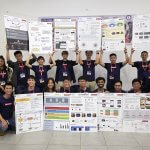This article is part of the MITB Thought Leadership Series published by the SMU School of Information Systems’ Master of IT in Business programme.
By Catalin Burlacu, Adjunct Faculty MITB (Financial Technology), SMU School of Information Systems
The accelerated digitalisation of both people and business around the world today is having a huge impact on the investment management and advisory space. The addition of new and vastly larger data sets, as well as exponentially more sophisticated analytical tools to turn that data into usable information is constantly changing the way investments are decided on, made and managed.
At the forefront of this change is the automated investment decision-making industry. Whether entirely run by algorithms or interlaced with human interaction, these so-called ‘robo-advisory’ firms are finding new ways to absorb data and to use it at a startling pace.
This article sets out the main trends that will affect the industry in the next five years: Artificial Intelligence (AI) and Machine Learning (ML), Conversational Computing and Immersive Technologies.
Robo-emergence
The first generation of robo-advisor systems built in the mid-2000s were designed to create a reliable and transparent investment advisory process based on data rather than the instinct of a human advisor. The detailed, multi-format and secure audit trails this approach generated also offered financial services businesses—often start-ups—reduced pressure from clients and regulators post the 2007 global financial crash.
As the sources of accessible data widened, these systems embraced emerging technologies for customer data mining. And as the algorithms that underlie the approach improved, they began to offer analytics for risk allocation and goal evaluation, relying on better speeds and breadth of feedback that could be returned to the system to enhance algorithmic decision making.
The Next Stage
But the current explosion in the digitisation of people, places, processes and ‘things’ represents a new era. The sheer volume of data received from any given object now allows for the creation of ‘digital avatars’—rich, rounded representations of physical things and events that will be fertile ground for the new processes, models and ecosystems of the next five years. This is the third wave of robo-advisory evolution.
There are three main trends that are working simultaneously to drive this change:
1) Intelligent Analytics
AI is moving away from needing humans to set up tasks and projects at the outset. For example, AI is now capable of predictive modelling of transactions based on their likelihood of being fraudulent, ‘reading’ a broad spectrum of client-related information, and putting the two together to better manage risk, all without data scientists defining anything more than the goal.
The next phase comes with augmented analytics. This is a new data and analytics paradigm in which AI uses machine learning to automate data preparation, insight discovery and insight sharing for a broad range of business users, operational workers and citizen data scientists.
Augmented analytics will enable expert data scientists to focus on specialised problems and on embedding enterprise-grade models into robo-advisory applications. Using natural language programming or natural language query, robo-advisory clients will spend less time exploring data and more time acting on the most relevant insights.
2) People-literate Technology
Conversational Artificial Intelligence platforms will drive the next big paradigm shift in how humans interact with the digital world. They will shift the model from technology-literate people to people-literate technology. The burden of translating intent will move from the user to the computer.
Conversational platforms are currently most recognisably implemented in Voice Connecting Appliances, Virtual Presentation Assistants and chatbots. The main design goal for user interaction will continue to be natural-language interfaces, but they may be eventually augmented by other input/output mechanisms to exploit sight, taste, smell and touch.
This will have a huge impact on robo-advisory services. On the one hand, this new type of data will provide a rich seam of information for robo-advisory systems to use to improve predictive modelling across risk, goal orientation and asset management. On the other, it will allow a completely new means of understanding client requirements such as risk appetite.
Over time, more conversational platforms will integrate with growing ecosystems of third-party services that include robo-advisory systems. A primary differentiator among robo-advisory systems will be the robustness of their conversational models and the API and event models used to access, invoke and orchestrate other services to deliver complex outcomes.
“Conversational artificial intelligence platforms will drive the next big paradigm shift in how humans interact with the digital world”
3) The Immersed Advisor
While conversational platforms are changing the way in which people interact with the digital world, virtual reality (VR), augmented reality (AR) and mixed reality (MR) are changing the way in which people perceive the digital world. Their integration with multiple mobile, wearable, IoT and sensor-rich environments—as well as with conversational platforms—will extend immersive applications beyond isolated and single-person experiences.
This will allow AI robo-advisory applications to identify key target personas and scenarios, and explore the needs of a target client in different settings, such as at home, in a car, at work or with an advisor—or at different points in their lives.
Understanding the Shifting Context
All of this leads to radically different future for the robo-advisory industry. As these systems and skillsets converge, the technology underlying the industry will be able to recognise when business events, or combinations of events, constitute a ‘business moment’—situations that call for specific business actions. An event-driven architecture for robo-advisory systems that optimises for a dynamic and shifting user context—as well as for the ever-changing markets— will win the day.

Catalin Burlacu is currently responsible for the architecture and design of multi-asset portfolios for institutional clients at UOB Asset Management, driving the quantitative investment and digital advisory business. As an adjunct faculty at Singapore Management University School of Information Systems, his practical expertise is in investment technologies, asset and risk management product development, digital transformation and related technologies. Catalin has more than 20 years of experience in managing absolute return strategies for hedge funds and investment banks, including Millennium Partners in Singapore and Morgan Stanley in Japan. He is well versed in quantitative investment and trading strategies, investment and risk allocation solutions and technologies for multiasset class investments. Catalin has a PhD in Control Systems from The University of Tokyo and an executive MBA from INSEAD, France.









